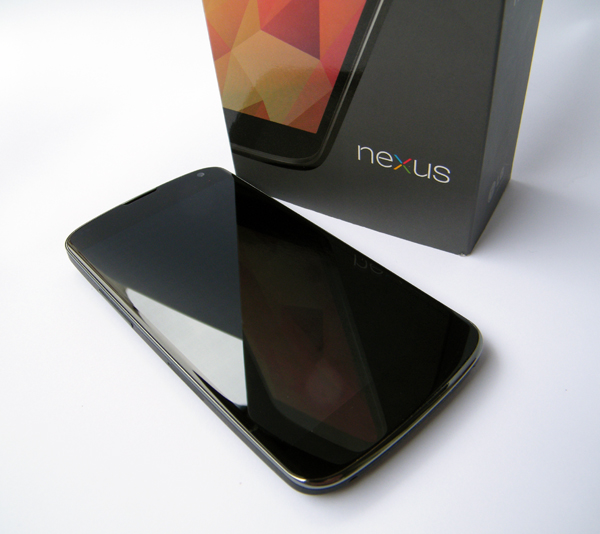Index


Review: Snappy and in a class of its own
The Nexus line of devices has always been considered a premium product line and as it was watched closely by Google, you could always expect premium service in terms of getting the latest OS updates first.
The Google/LG Nexus 4 is the fourth generation Nexus smarpthone and while the One, S and Galaxy Nexus were premium smartphones, the Nexus 4 has another ace up its sleeve. In terms of pricing it fits somewhere in the mid-range segment, yet it has enough muscle to take on high end gear. In order to make a smartphone with a US $299/$349 price tag on Google Play Store, LG and Google had to cut some corners and we honestly think they did an impressive job.
Although it was announced in October 2012 and started to ship just a month later, LG/Google Nexus 4 had been on a rather bumpy road as it was plagued with availability issues for more than a few months after it was launched. The blame was shifted back and forth between Google and LG and at one point in time it was obvious that they either simply could not make enough phones, or did not expect a lot of demand for it.
After almost five months, we finally managed to get our hands on one sample from LG, but since LG's retail price is questionable it is a much better idea to get it from Google's Play Store. We are still talking about the same smartphone, but we’ll get to the price details a bit later.
As we already said, Nexus 4 is more of a mid-range device by today's standards, especially if you look at its US $299/$349 (€299/€349 in EU) price tag. In terms of specifications, it features Qualcomm’s Snapdragon APQ8064 chipset with quad-core Krait CPU clocked at 1.5GHz backed by Adreno 320 GPU and 2GB of RAM. It is obvious that LG did not make any cuts there and the chipset is still very fast indeed, although newer stuff is hitting the market.
LG and Google opted for a beautiful 4.7-inch 1280x768 True HD IPS Plus touchscreen with Zerogap Touch technology hidden behind Gorilla Glass 2 protection glass. Of course, high-end smartphones now feature full HD screens and sizes of 5-inch and beyond but then we are talking about smartphones that easily go over US $500/€500. Then again, there is really not much point in 1080p phones with ultra high ppi density. 
The rest of the specs are where LG decided to cut some corners. LG had to stick with an 8-megapixel camera for the Nexus 4. It also decided to release models with either 8GB or 16GB of storage space without a microSD card slot, while the competition is 32GB models, in some cases with microSD. It also lacks LTE, as Google apparently concluded that it is still not that important (not in Europe, but in the US market it certainly is).
The rest of the specifications include a front facing 1.3-megapixel camera, 802.11bgn dual-band WiFi, Bluetooth 4.0, the usual set of sensors, A-GPS with GLONASS and microUSB (SlimPort) 2.0 port. It has a 2100mAh battery with wireless charging that work with an Qi-compatible wireless charger.
The best part of the story is that it launched with the latest Android 4.2 Jelly Bean OS out of the box while most of the competition, including most LG made phones, were still stuck with Android 4.1 or even Android 4.0.



